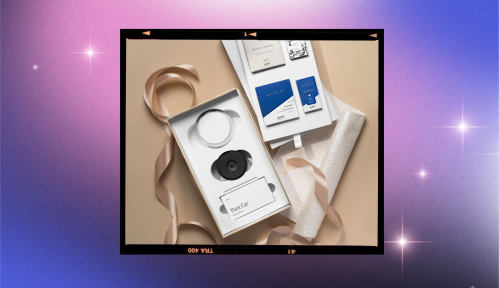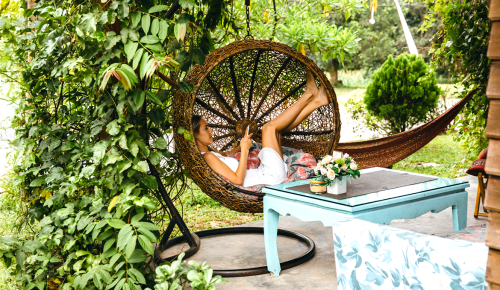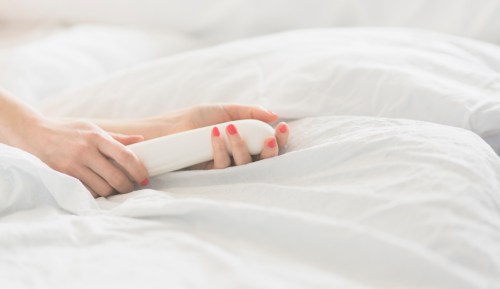If you’ve had to pack up all your material possessions for a move or gone full Marie Kondo on your closet at some point, then you know the thrill of getting rid of stuff that no longer adds value to your life—and the feeling of lightness that follows. It’s euphoric. This is precisely the basis behind the minimalist living movement. A pared-down existence, however, goes beyond just decluttering your home.
Experts in This Article
Marissa Zen is the founder of the minimalist lifestyle blog Squirrels of a Feather.
What is minimalist living?
Marissa Zen, founder of the minimalist lifestyle blog Squirrels of a Feather, says minimalist living is not about getting rid of all your possessions or having as little things as possible. “When people think of ‘minimalism,’ they tend to focus too much on the aesthetic of minimalism and not enough on how to implement it in a healthy and practical way in their own homes,” she says. So, even if all-white, museum-like home decor á la Kim Kardashian isn’t your style, you can still live a minimalist lifestyle by only keeping—like Kondo would say—the things that spark joy.
“Surround yourself with that which makes you happy and adds value to your life and removing the non-essential,” Zen explains. This can include physical possessions, but it also encompasses simplifying other areas of life as well, such as quitting hobbies you’ve overcommitted to or ditching toxic relationships, she says.
Living more minimally also means you’ll likely be saving money by not spending on things that don’t truly adding some form of value to your life. Improved focus and productivity is another perk, Zen says. And, most importantly, she adds that minimalist living can contribute to an increased sense of life satisfaction because you’re surrounding yourself with stuff that you love and only spending your time on endeavors that feel worthwhile to you.
5 ways to embrace minimalist living
1. Find your why
To get your minimalist living journey started, Zen recommends sitting down with pen and paper and writing down all the reasons you want to simplify your life. For instance, perhaps you want to create a sense of calm in your space, have more free time to spend with your family, or save to buy a new home. Once you’re done, keep that paper handy. If things get challenging down the road—like, let’s say, laziness kicks in when it’s time to declutter—Zen says your reasons will help keep you on track.
2. Declutter your home
You probably saw this tip coming, but the next step is to get your Marie Kondo on and start decluttering your home. Before you start pulling things out of drawers and closets, Zen suggests first establishing a decluttering plan, whether that’s going room by room or by category. Then, she says, start with the areas or categories that feel the easiest to tackle. Save things that may be more challenging to declutter like sentimental items and photographs for last.
While you’re going through all your stuff, get rid of duplicates, Zen says. No, you don’t need three spatulas or seven pairs of almost identical black leggings when you only ever reach for your favorite pair.
3. Reduce visual clutter
Once you’ve pared down your possessions to just the ones you can’t live without, the next step is deciding how to store and display them in a way that isn’t overwhelming to your eyes. While there are some things you can tuck away inside a drawer or in a closet (out of sight, out of mind, as they say), visual clutter is a whole other thing to deal with, and it tends to pile up quickly. For that reason, Zen recommends making it a habit to keep your floor and surfaces clutter-free, putting away appliances, and taking care of bills and junk mail as soon as you get them.
4. Create a quarantine box
Not sure if you’re ready to toss something just yet? Keep it in quarantine. “Put the item or items in a box, and then store them away out of sight, such as in your basement or garage,” Zen says. “If you don’t find yourself missing or looking for that thing in a set period, such as 30 days, then after that, you can get rid of those things guilt-free.”
5. Go beyond physical clutter
As noted earlier, minimalist living isn’t just about tangible goods, which is why Zen suggests applying the principle to other aspects of your life as well. To start, she recommends going over all your digital clutter such as apps, social media notifications, computer files, and emails.
And, more importantly, Zen also advises addressing mental clutter. This can include eliminating endless to-do lists, letting go of feelings of perfectionism, addressing the things that cause stress and anxiety, and ending toxic relationships. “Think deeply about how you spend your time and if you can free up more of it to rest, relax, and find mental clarity,” she says.
Oh hi! You look like someone who loves free workouts, discounts for cutting-edge wellness brands, and exclusive Well+Good content. Sign up for Well+, our online community of wellness insiders, and unlock your rewards instantly.
Sign up for the Well+Good SHOP Newsletter
Get exclusive deals on wellness, beauty, fitness, and food products that have been hand-picked by our editors.
Got it, you've been added to our email list.











